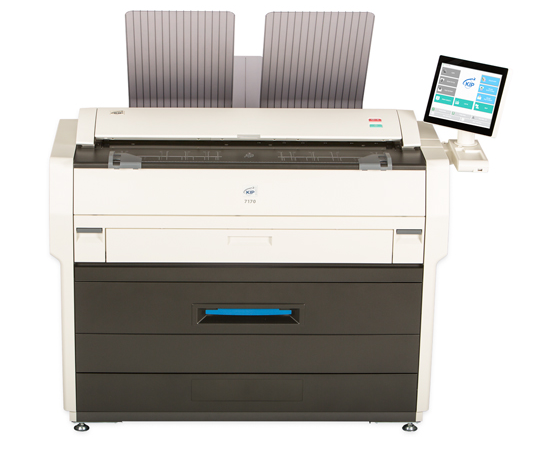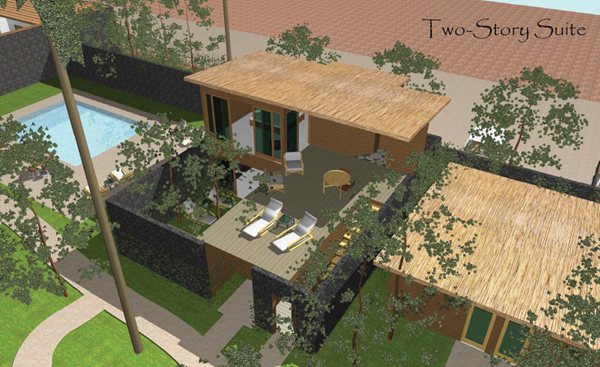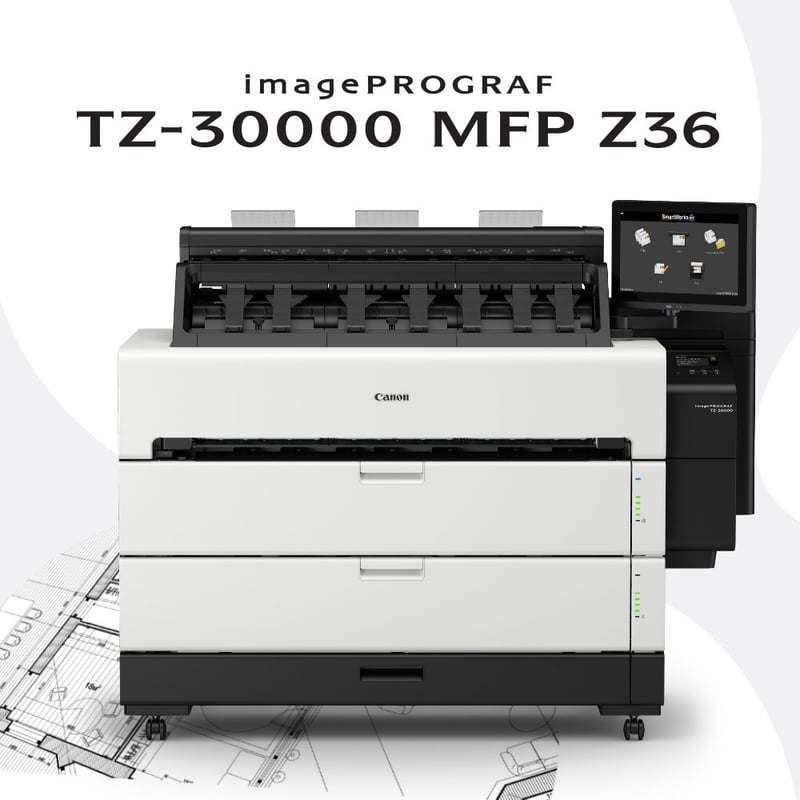[ Free Consultation ] Are you looking to upgrade your plotter technology, but have no idea where to start? Get help from our top tech experts in a free consultation call.
Click Here to Schedule Your Free Consultation Call
During the mid-to-late 2000s, many architectural, engineering, and construction offices throughout the country purchased Kip 3100 plotters and MFP units.
The Kip 3100 was innovative for its time because of its small single footprint design. Plus, it gave you the ability to print copy and scan conveniently with a single device.
 Pictured: Kip 3100 MFP system
Pictured: Kip 3100 MFP system
Today, there are still plenty of Kip 3100s in use, though the heyday of the Kip 3100s are long gone. Unfortunately, the Kip 3100 can no longer meet the dynamic demands of a modern AEC office.
Increasing needs for color plans and architectural drawings elevations requires a full-color machine that is capable of the volume and relative speed of the Kip 3100. Therefore, the Canon TZ 30000 is the perfect solution replace your old Kip 3100 toner plotter.
Meet the Canon TZ
The Canon TZ 30000 printer (multifunction system) was launched in 2021. This new and innovative system takes large format printing, copying, and scanning to new levels.
At its core, the Canon TZ is a single-footprint, large format printer that comes standard with 2 paper rolls. You can also get this system configured as a complete multifunction system with a top-mounted color scanner and all-in-one, Win 10, touchscreen PC controller.
Even though the Canon TZ Series is an inkjet printer, it nearly as fast as the legacy toner-powered Kip 3100. However, the Canon cost much less to operate. Much of this has to do with that the Kip is an older system and parts are not as accessible as they used to be.
Since the TZ uses inkjet, many of the typical parts needs for a toner plotter simply are not needed. These are things like a photoconductor (drum), fuser unit, rollers, etc.
Since the TZ 3000 doesn’t use any of these parts, it is much easier to service, and heat and toner buildup experienced for decades from toner machines are a thing of the past.
The Big Differences
Color Printing
The Kip 3100 had an upgrade to convert the scanner to a color scanner, giving you the option to scan either monochrome or full color. However, the print engine technology was black toner, so the only output available was black line drawings.
Today’s AEC printing needs are much more dynamic, requiring the ability to print and scan color drawings for color markups, renderings, or even maps. It is important to point out that different types of printing require various print media for the best results.

The Canon 5-color LUCIA TD Inks are pigments (not dye ink), they are both fade-resistant and water-resistant and capable of use on a wide range of media, including photo paper, vinyl, canvas, and more.
Scanner Technology
The basic scanning technology between the two systems is similar, CIS – Contact imaging sensor. Instead of using a standard lens to reduce the original image onto the sensor, CIS technology incorporates many fiber optic lenses to transfer the original image information to an array of sensors.
The Kip also uses CIS scanning but relies on multiple sensors that require for each signal path to be complied to create the complete image.
 Kip 3100 uses a staggered array of CIS scanning image sensors
Kip 3100 uses a staggered array of CIS scanning image sensors
Usually, this is not much of an issue, but if the alignment is off, you can experience misalignments of the data which usually require a scanner recalibration or worse, a service call.
What make the TZ unit different is that the CIS sensors are not configured in a staggered array.
The Z36 scanner has only one single CIS sensor. The benefit of the SingleSensor technology is that the data does not need to be digitally stitched together and it provides consistent and better color accuracy with more detail in the shadows and highlights than a staggered CIS array scanner.
Paper (Print Media) Management
True intelligent media handling is one of the many “Canon First” technologies onboard the TZ. When loading paper, you simply insert the spindle-mounted paper into the unit, close the door, and you are done.
The printer automatically drives the paper into the system, and detects the media type, width, and length of the roll. This simplifies operation, employee training, and saves you time.

Does your Kip 3100 do that?
This automated media handling is an industry first from Canon. The imagePROGRAF TZ is the only printer that can do this is this market segment that can make loading your plotter paper this easy.
LED Paper Left Indicator
The built in “remaining media indicator” is set of LED lights on the front of the roll drawers that instantly give let you know how much paper is remaining on the roll.
It does this by displaying four different levels, telling you when the paper is running low.
The Kip 3100 simply does not have the technology to give you this type of information at the machine level.

The Remaining Roll Indicator an exclusive Canon TZ first.
Hot Swap Ink Tanks
All Canon large format printers, including the TZ series, use a sub-ink system. This acts as an internal reservoir for the wide format printer, functioning to remove all the ink from the replaceable ink tanks for before changing them.

Another advantage of the sub-ink system is that it allows you to “hot swap” the ink tanks on the fly.
This helps eliminate any wasted ink and decreasing your cost per print. The empty ink tanks can then be replaced "on the fly," without stopping the printer. This saves you time and money and eliminates the risk of ruining a print job because the printer ran out of ink.
Wi-Fi Compatibility
Given the age of the Kip, wireless connectivity was not natively built into the machine. All new generations of Canon plotter printers are configured with both hardwired and wireless network adapters.
The traditional RJ-45 is still the TAVCO preferred method to integrate the machine with your network, but in our experience, the wireless card works as advertised.

Given the changing state of the working office, having more flexibility is certainly a good thing. If your office space is downsizing because your workforce is become more remote and/or working a flex schedule in the office, having more flexible options is awesome!
Final Thoughts
The installed base of Kip 3100 printers is aging. As with any other piece of technology, it hard to keep up with the future when you are using tools from the past. The modern AEC office is changing. Are you ready?
Remote employees, digital workflows, and shrinking floorplans are here to stay. Shouldn’t your plotter keep pace with the changing times?
Check out how the powerful new Canon TZ 30000 MFP system can give you the dynamic power that you need, make life easier, and save you both time and floorspace. Ready to check it out?
What new features of the Canon TZ seem like they would be the most beneficial to you?
Questions? Contact us
Printer Specifications
| Model | Canon iPF TZ 3000 MFP Z36 | Kip 3100 Mono/Color MFP |
| Imaging colors | Inkjet 5-color LUCIA TD ink system | Monochrome black |
| Standard media roll | 2 | 1 or 2 |
| Max media output width | 36" | 36" |
| Intelligent media roll system | Yes | No |
| Smart roll set | Yes | No |
| LED roll paper indicator | Yes | No |
| Hot swap ink tanks | Yes | No |
| Max. print speed D-size line drawing | 4D/minute | 5.8D/minute |
| Media output | Top output: top delivery tray; front output: basket | Integrated front print and copy delivery & optional stacker configurations available |
| Wi-Fi enabled | Yes | No |
| Direct print from USB | Yes | No |
| Max print resolution | 2400 x 1200 | 600 x 600 |
| Hard drive capacity | 500 GB | 80 GB |
Printer Specifications
| Model | Canon iPF TZ 30000 MFP Z36 | Kip 3100 Mono/Color MFP |
| Technology | SingleSensor CIS | CIS array |
| Touch screen monitor | Yes | Yes |
| Max. optical scan resolution (dpi) | 1200 dpi | 600 dpi |
| Max. media thickness | 1.0 mm | 1.6 mm |
| Max. scan width | 36" | 36" |
| Max. scan speed (ips) | B/W: 13: Color: 3 | B/W: 7.7; Color 2.6 |

August 16, 2021


Comments